Similar Posts
To articulate what is past does not mean to recognize ‘how it really was’. It means to take control of a memory, as it flashes in a moment of danger.
Walter Benjamin
In 1557, the Corpus Historiae Byzantinae, a series initiated by the German monk and humanist Hieronymus Wolf[1], was published. Ever since, the region considered the Roman Empire or ‘Romania’ (Ῥωμανία) by its inhabitants and neighbours—and to a certain extent the natural continuation of Classical Antiquity—, has been known as the ‘Byzantine Empire’. Its birth is marked by the foundation of Constantinople by the Roman Emperor Constantine the Great in the year 330, and its dissolution is sealed by the fall of this city into the hands of the Ottoman Turks in 1453; meanwhile, what used to function as what we nowadays call a ‘work of art’—in spite of the obvious differences—has been called ever since ‘Byzantine icon’[2]. One should consider that names are not incidental and that they determine our approach to the reality they name; likewise, one should bear in mind that they are not absolute[3].
The adjective ‘Byzantine’ was used by European Classicism pejoratively and with a very specific target: that of drawing the line between resplendent Antiquity and the so-called ‘Dark Ages’, and thus cleansing the legacy of Classical Antiquity—of which they consider themselves the authentic continuity—from any undesirable contamination[4]. Thus, after the reappearance of the spirit of Classicism during the Renaissance as a deus ex machina, all artistic and intellectual production of the Christian West was indexed as ‘decaying’ and icon painting was shoved into the big trunk of primitive art[5].
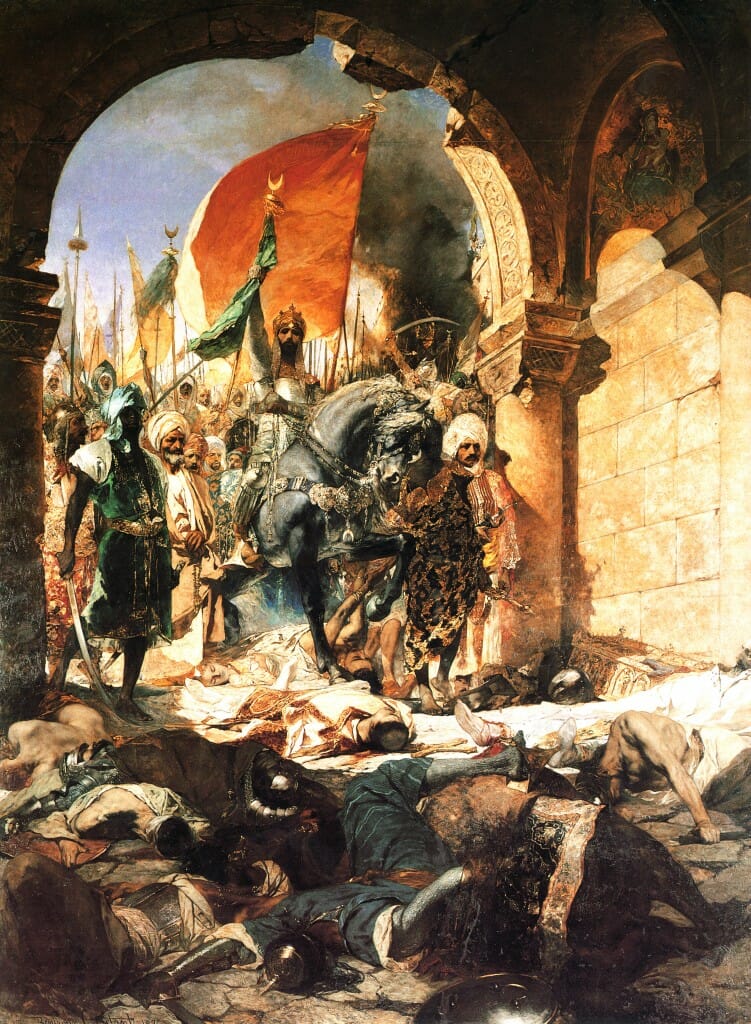
A Romantic vision of the fall of Constantinople. “The Entry of Mahomet II into Constantinople” by Benjamin Constant. 1876
The question is that nowadays icons are being painted and not only in countries with an Orthodox tradition. The iconodule passion has reached as far as the New World. Apart from conferences, workshops and academic courses in Russia, Greece and other countries of Eastern Europe—specially dedicated to experimental research, i.e. to contemporary icon production—there are all over the world workshops and institutions in which one can practice this age-old artistic tradition: from the Middle East to Western Europe; from Latin America to the United States of America. It makes one wonder: how is it that our opinion about the artistic tradition of the Christian West and about the understanding of the world that it bears has made such a radical turn?
However, in the context of the eclecticism that characterises our era, the icon has turned into an illustrious prototype of ‘spirituality’, ‘mysticism’ and ‘authenticity’, obscuring both the reality of its use in the past and the experience it embodies in the present; on the other hand, in the countries with an Orthodox tradition, a strong tendency to dogmatise the style of the icon is observed, limiting itself to the dialogue with ‘secular’ aesthetic reality[6]. Nonetheless, the presence of the icon nowadays as a vehicle of a certain experience and world vision—and not merely as a museum object—is an irrefutable fact. In this case, it is inappropriate to talk about the ‘Byzantine’ icon—since Byzantium passed away with the fall of Constantinople—and the following questions arise, which, as we shall see, can only be answered by a ‘hermeneutical’ approach: To what factors does our enthusiasm for the icons respond? Is it just some kind of longing for the ‘light from the East’ that impedes the historian’s scientific work?[7] Can the artistic tradition of the Eastern Church open up paths of creation for modern man or is it strictly confined to the imitation of a dogmatised style?
According to the history of art, the modern discovery of the icon dates back to the mid-19th century and it is a part of the Romantic quest for new models in the face of the socio-cultural crisis that ravaged Europe with the collapse of the Old Regime[8]. Thus, two phenomena related to the Romantic Movement converged in the discovery of the artistic tradition of the Western Church: on the one hand, the Western revaluation of ‘primitive’ cultures in the light of the archaeological discoveries and, on the other, the reaction of the Russian Romantic intellectuals—who discovered in the icon an authentic Russian pictorial tradition in contrast to the tendencies imported from the West—to the westernisation of Russia that took place during the 18th century by Peter the Great[9]. However, although both circumstances share the same socio-political situation of Romanticism, in our opinion, they result in two very different horizons of interpretation[10].
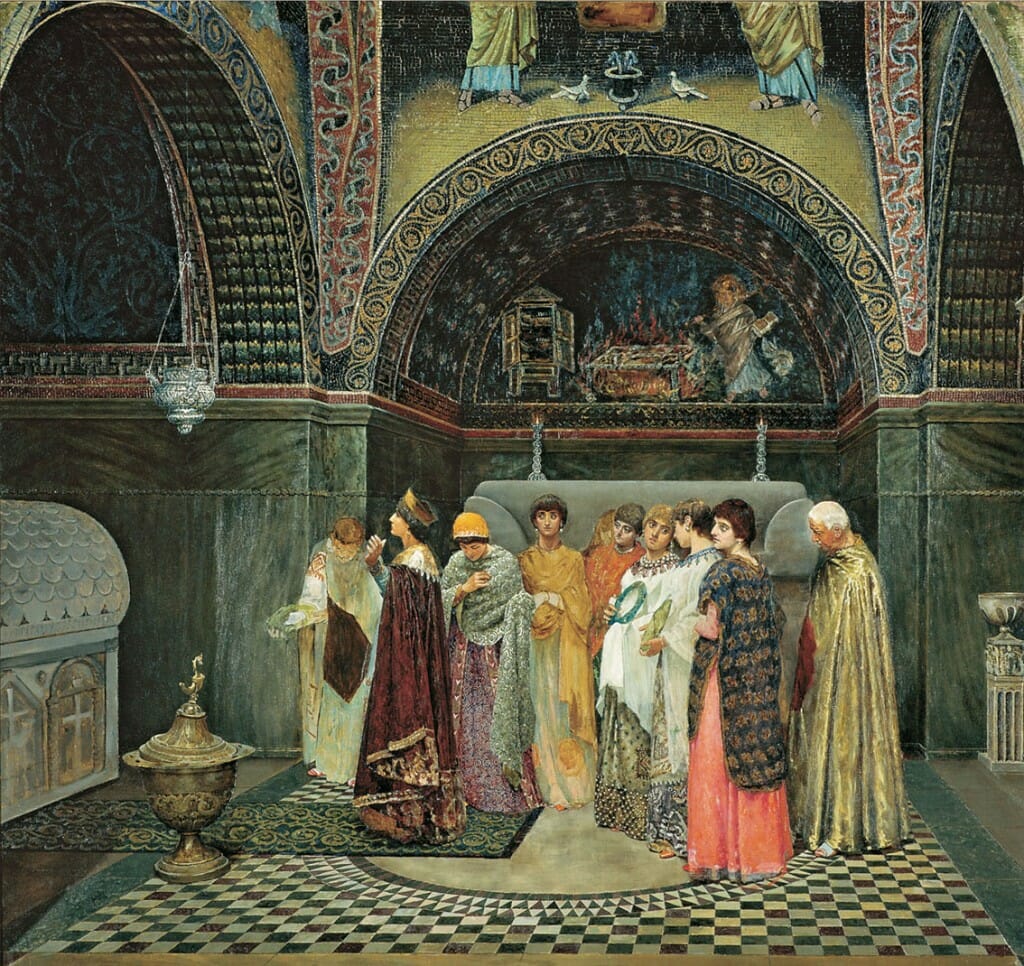
19th century Romantic fascination with the Byzantine past. Vasily Sergeyevich Smirnov, “Morning Outing of the Byzantine Empress to the Tombs of her Ancestors” Circa 1880.
In 1839 the French archaeologist Adolphe Didron visited Mount Athos and discovered the work Ἑρμηνεῖα τῆς ζωγραφικῆς τέχνης (a technical icon painter’s manual written in the 18th century by the Greek monk Dionysius of Fourna). Although he seemed fascinated by such an exotic art, he did not refrain from complaining about the servile character of the icon painter:
The Greek painter is the slave of the theologian. His work is the model for his successors, just as it is a copy of the works of his predecessors. The painter is bound by tradition as the animal is by instinct. He executes a figure as the swallow builds its nest, the bee its honeycomb. He is responsible for the execution alone, while invention and idea are the affair of his forefathers, the theologians, the Catholic Church.[11]
There is no doubt that, from the moment Didron dedicated himself to archaeological research, his attitude regarding icons was much more friendly than the historians of the Enlightenment, who simply saw in icon painting a degeneration of the Classical Antiquity art. However, despite his condescending attitude, Didron seems to have been unable to consider the possibility of facing just another way of conceiving artistic production, and ends up identifying the monk-icon painter with the figure of a slave in the sense that he lacks an individual conception of art.
Meanwhile, the interest of the Russian 19th-century artists in the icon is also related to the appearance of a text: the Philokalia (Φιλοκαλία), a collection of texts written by the Eastern Church Fathers, which was first published in 1782 by the monk of Mount Athos Nicodemus and shortly afterwards translated by the Russian monk Paisius Velichkovsky[12]. In the late 19th century, this text became popular in the Russian literary world owing to the anonymous work Tales of a Russian Pilgrim, resulting in an authentic rebirth of the spiritual tradition of the Christian East. The influence of the Philokalic revival can also be discerned in the work of one of the masterpieces of universal literature, The Brothers Karamazov (1880) by Fyodor Dostoyevsky (1821-1881)[13]. In Dostoyevsky’s work, the figure of starets—a kind of monk that has the role of a spiritual director—plays an important part in the shaping of the character of Aliosha, the novel’s hero, bearer of a new type of wisdom which reconciles the existential doubt of modern man with the serenity—hesychasm (ἡσυχασμός)—of Orthodox monastic tradition.
Although there is no doubt that the historiography and archaeological work of the 19th century along with the socio-cultural crisis of pre-revolutionary Russia are mutually affected determining factors for the discovery of the icon, the hermeneutical situations that mark the approach to the same phenomenon are different: although for the European scientist the icon is something exotic that can only be appreciated as an object of the past, the Russian intellectual sees in it an uninterrupted cultural tradition and approaches it as a live member of his history[14]. It is important to underscore that by ‘hermeneutical situation’ we mean the heritage of experience which precedes the elaboration of a concrete judgment, which not only limits any approach to a concrete phenomenon —including the objective-oriented approach of the scientist— but also, and above all, turns into a possibility of its appearance[15].
During the first decades of the 20th century, the icon’s fate drastically changes: exhibitions are held in Russia (1913), in Germany (1926) and in England (1929), and icon collections are included in European museums. Meanwhile, the interest of Russia and of the West in the icon converge in Paris, the city that is to be one of the European centres where the study of the icon will take on the character of an academic discipline in the context of Byzantinistik[16]. It is also there that the intellectuals of the Russian diaspora, some of them escaping from the Red Army and some of them from the White Army, founded the St. Sergius Orthodox Theological Institute (1925) and the St. Dionysius Theological Institute (1945)[17]. Therefore, during this period the two areas of knowledge that currently debate the truth of the icon are formed: on the one hand, Byzantinistik —which brings together the areas of history of art and archaeology— and, on the other, contemporary Orthodox theology. However, during the same period, a third factor ends up appearing, which, in our opinion, is the most determining factor for the modern discovery of the icon, given that it is related to its immediate interference in the state of things of contemporary civilisation: the role of the icon in the formation of the avant-garde[18].
In December 1915, in Saint Petersburg, the first public exhibition of the Russian avant-garde takes place; in this exhibition, paradoxically entitled ‘Last Futurist Exhibition of Paintings: 0.10’, Kazimir Malevich’s (1878-1935) Black Square is exhibited for the first time. It is not within the purposes of this article to analyse the unquestioned importance of this work for the subsequent development of modern art in general and of abstract art in particular. We would only like to underscore a ‘detail’ that literally opens up a new perspective for the interpretation of what we know as ‘Byzantine icon’ and its relevance for contemporary civilisation: the exact spot where the work was placed. As we can see in Figure 1, Malevich’s emblematic work is placed high up on the wall across the corner of the room with a slight forward inclination, exactly in the way the icon of the Virgin is usually placed in public and private places in pre-revolutionary Russia[19].
Of course, it cannot be by chance that a painting is placed in the corner of a room. Unlike the wall, which is unidirectionally related to the space, the upper corner dominates the whole place. If we also consider that the painting in question lacks background and perspective—just as in the case of the icon and of the Black Square—we can firmly argue that this painting ‘opens itself’ towards the space in which it is placed. So, strictly speaking, from the moment the two-dimensional surface of the image is not separated from the viewer’s space, we should not talk about a ‘painting’, but instead about a pure ‘image’ (εἰκών)[20]. Neither is it by chance that this way of displaying the picture is in the context of the modern quest of Suprematism or Non-Objective Art[21].
The influence exercised by the ‘Byzantine’ icon on the conception of space in modern art is not limited to Malevich’s work. Between 1921 and 1924, the Russian mathematician and theologian Pavel Florensky (1882-1937) was hired to teach ‘Analysis of spatiality in the work of art’ at the Higher State Technical-Artistic Laboratories of Moscow (VKhUTEMAS) —the equivalent of Bauhaus in Russia[22]. Florensky’s teaching experience at this school—breeding ground for important representatives of modern painting—resulted in the writing of the essay ‘Analysis of space and time in figurative works of art’ in 1925. In this essay, Florensky proved that the perspective is just one way among others to represent real space on a two-dimensional surface, thus questioning the scientific character of academic painting and the modern rules of scientific knowledge, based on the absolute distinction between subject and object[23].
The traces of the icon can be detected in other Russian painters of the early 20th century, such as Kandinsky, Chagall or Jawlensky; we also believe that another significant element is the fact that one of the founders of Constructivism, Vladimir Tatlin (1885-1953), started his career as an icon painter[24]. However, apart from Russia, the stamp of the Byzantine icon is also found in the West in the works of Matisse, Klimt and Rouault—prominent representatives of European movements of the avant-garde; and it is not limited to plastic arts, but it expands to literature through the work of the colossus of English literature, William B. Yeats, and the early works of one of the most influential poets of the 20th century, Rainer Maria Rilke[25]. The climax of this poetic impetus that seems to spring from the icon, is the film Andrei Rublev (1966)—an indisputable point of reference in contemporary cinematography and the artistic debate of our days—by the Russian filmmaker Andrei Tarkovsky (1932-1986), in which the biography of a monk-icon painter works as a correlation element for the presentation of the contemporary artist’s task, according to Tarkovsky[26].
It seems that the icon, in contrast to other traditions of the past, has a privileged place in the formation of the state of things in contemporary culture and it is not limited to being the expression of a nostalgia or of a closed dogma[27]. This is confirmed by the fact that the icon has a determining role in the assimilation of certain values of modernity in countries of Orthodox tradition and the fact that nowadays icons are being painted throughout the world. Nevertheless, a question arises: if, on the one hand, modern art is a tabula rasa in relation to the art of the past and, on the other, the ‘byzantine’ icon is a fact consummated by the disappearance of the Byzantine Empire in 1453, how can it be that these two collaborate as determining factors in the elaboration of a certain kind of ‘poetics’ of the present? This question cannot be answered in a satisfactory way for the time being, and moreover, most importantly, it has not yet been properly formulated owing to the absence of an appropriate methodological framework[28].
The two disciplines dedicated to the study of the icon nowadays—Byzantinology and contemporary Orthodox theology—despite their acknowledgment that the link between the discovery of the ‘Byzantine’ icon and the development of modern art is still pending, cannot agree on how to approach it. Thus, on the one hand, for some byzantinologists, the approach of the theologian lacks method, because it submits to a nostalgia for an era that no longer exists[29]; on the other hand, for the contemporary Orthodox ‘theology of the icon’, the approach of the scientist—and maybe of the West in general—ignores the experience of the Revelation that takes place within the Church, contaminating with mundane conceptions the purity of the dogma[30]. This polarisation between the two sciences, which however coincide in naming their object of studies ‘Byzantine icon’, contributes to the creation of a series of misunderstandings that stand in the way of understanding the icon as a contemporary phenomenon.
In this way, for example, while some theologians argue that an icon in order to be such—i.e. ‘Byzantine’—has to stick to strict stylistic norms, the archaeological finds demonstrate a variety of styles of the icon in its historical development, a fact that opens up a horizon of innovation and creation in the current production of icons[31]. On the other hand, the common opinion of the history of art attributes the absence of perspective in the icon mainly to the influence of Neoplatonism without realizing its relation to the ecclesiastical understanding of the World, which is surely influenced by Neplatonism, but it also has enormous differences—in particular regarding the neoplatonic matter-spirit dualism, which cancels the Christological basis of the icon[32].
There is no doubt that the situation we hereby expose in such a compact manner has in fact many nuances[33]. However, what we would really like to highlight is the aporia of current research, when the icon stops being ‘Byzantine’ and turns into a vehicle of a certain kind of ‘poetics’ of the present. Therefore, it is indeed true that the history of modern interest in the icon dates back to the 20th century and is crystallised in the formation of two academic disciplines, Byzantinology and contemporary Orthodox theology, but it is also a fact that there is no common methodological framework shared by these two disciplines. This causes, among other problems, perplexity in dealing with the consideration of the icon as a bridge between tradition and modernity. So although Byzantinology and theology can only see the icon as ‘Byzantine’—each for their own reasons and each ignoring the other’s reason—Malevich’s Black Square and a large part of the art and thought developed during the 20th century bind together with unbreakable ties the aesthetic suggestion of modern art and the historical experience of the icon. This ‘concerns not only nor first of all a point in the history of ideas, nor even a decision of Christian dogma: it formulates above all an—perhaps the only—alternative to the contemporary disaster of the image’.[34]
——————————————————————————–
[1] Regarding the life and work of Wolf, vide Hans-Georg Beck, Der Vater der deutschen Byzantinistik. Das Leben des Hieronymus Wolf von ihm selbst erzählt (Munich: Miscellanea Byzantina Monacensia 29, 1984).
[2] In practice, as pointed out by Hans Belting, icon painting (on all its supports, i.e. mural, panel and miniature painting) is one of the most —if not the most— important expression of European painting for more than a thousand years; vide Hans Belting, Likeness and Presence. A History of the Image before the Era of Art (Chicago: University Press, 1994), 26.
[3] Ever since The World of Late Antiquity by the Irish historian Peter Brown was published in the ’70s, contemporary historiography has recognised the difficulty of categorically separating Byzantine civilisation from the legacy of Antiquity.
[4] This target can be traced in works such as The History of the Decline and Fall of the Roman Empire by the father of modern historiography, Edward Gibbon (1737-1794), or History of European Morals by William Lecky (1838-1903).
[5] By ‘Classicism’ in art we mean the generic use of the term, as in the establishment of a canon based on an idealisation of the aesthetics of Greco-Roman Antiquity. Therefore, another determining factor for the censure of icon painting during the European Classicism and its detachment from the legacy of the Antiquity was the acknowledgment of academic painting in the West as the only valid system of representation from the Renaissance until the early 20th century, appropriating at the same time the role of the authentic continuator of the aesthetic values of Classical Antiquity. This presumed link originates in an illusion, which persists to this day: the consideration of the art of Classical Antiquity as a merely ‘naturalistic’ art (vide Χρήστος Καρούζος, Αρχαία τέχνη. Ομιλίες-Μελέτες (Αθήνα: Ερμής, 2000), 21-30 and Erwin Panofsky, Perspectiv as Symbolic Form. (N.Y.: Zone Books, 1991), 37-45).
[6] As Hans Belting quite ironically puts it, the icon ‘[…] has always been of more interest to theologians and poets […]’ (Belting, Likeness and Presence, 17).
[7] Belting, Likeness and Presence, 21
[8] For the history of the discovery of the icon vide Belting, Likeness and Presence, 17-26.
[9] For a review on the Romantic understanding of the tradition, vide Robert Langbaum, ‘Romanticism as a Modern Tradition’, The poetry of expierence (N.Y.: Random, 1857), 9-37.
[10] Unlike Belting, who sees no difference (Belting, Likeness and Presence, 26). For the German historian, during this era the Romantic concept of the icon is formed, which is common in East and West and dominates our understanding of the icon to this day, concealing its ‘real’ history (Belting, Likeness and Presence, 21).
[11] From the foreword of the French translation of the text of Dionysius of Fourna (as quoted in Belting, Likeness and Presence, 18). Apart from French, at about that time the text of Dionysius was also translated to German, which makes one see the great dissemination of the text within Romanticism.
[12] Since the early 20th century, the rebirth of Eastern patristics in the Orthodox world has been crystallising in several contemporary philosophical suggestions, among which the work of the contemporary Greek philosopher and theologian Christos Yannaras stands out (vide Arthur Bradley, Negative Theology and Modern French Philosophy (London / N.Y.: Routledge, 2004) and Norman Russell, ‘Modern Greek Theologians and the Greek Fathers’, Philosophy & Theologie 18, 1 (2006), 77-92).
[13] Just a few years before that, in 1873, the novel The Sealed Angel by Nikolai S. Leskov is published, in which a concrete icon symbolises the restitution of the Russian character: ‘This crisis of identity fostered reflection on the Russian past in the nineteenth century, including specifically attention on the icon, which, before the country had come under Western influence, was its only form of panel painting.’ (Belting, Likeness and Presence, 19).
[14] While it would be too far-fetched to affirm that Dostoyevsky appreciated the icon tradition in particular, the climate generated by the Philokalic revival actually contributed to develop a new historic approach to the icon tradition.
[15] ‘We define the concept of ‘situation’ by saying that it represents a standpoint that limits the possibility of vision. Hence essential to the concept of situation is the concept of ‘horizon’. The horizon is the range of vision that includes everything that can be seen from a particular vantage point. Applying this to the thinking mind, we speak of narrowness of horizon, of the possible expansion of horizon, of the opening up of new horizons, and so forth. […] Similarly, working out the hermeneutical situation means acquiring the right horizon of inquiry for the questions evoked by the encounter with tradition.’ Hans Georg Gadamer, Truth and Method (London: Continuum, 2006), 301-2. Vide also ‘Prejudices as conditions for understanding’ (in Gadamer, True and Method, 277-306).
[16] Two personalities related to the birth and development of this discipline in France are the French archaeologist and historian Gabriel Millet (1891-1921) and the art historian of Russian origin André Grabar (1896-1990). Other European centres of Byzantinistik are Germany and Austria, where the important contributions of personalities such as Kurt Weitzmann (1904-1993), Ernst Kirtzinger (1912-2003) and Otto Demus (1902-1990) emerge.
[17] The St. Sergius Orthodox Theological Institute, closely linked to the flourishing of Eastern patristics, is still operating and, along with the St. Vladimir’s Orthodox Theological Seminar in New York (founded in 1905), they constitute centres of research and dissemination of contemporary Christian Orthodox thought. On the other hand, the Russian writer and icon painter Leonid Ouspensky (1902-1987) shall develop the ‘theology of the icon’, which shall result in the publication of the work La Théologie de l´icône dans l´Eglise orthodoxe (Paris: Ed. du Cerf) in 1960, a book which is basic for the understanding of contemporary acceptance of the icon in the West.
[18] Γιάννης Ζιώγας, Ο βυζαντινός Μάλεβιτς (Αθήνα: Στάχυ, 2000) 40-41. A possible interpretation of the reference of the Avant-gardes to the icon is due to a certain ‘primitivist’ tendency which is present in modern painting (Belting, Likeness and Presence, 20-21). This phenomenon was already detectable from Van Gogh’s soft spot for Japanese engravings all the way to Picasso’s predilection for African masks, which is due to the quest for renovation of the formal repertoire that had been reduced to the naturalist form in the West. However, as we will see, the Russian painters’ reference to the icon is not limited to formal aspects but it is based on its liturgical function. On the other hand, while a Western viewer —and maybe even Picasso— has to visit a museum in order to have an experience of the African masks that inspired the first cubic painting of the history (The young women of Avignon, 1907), for the Russian viewer and artist the icon is a vernacular and current tradition.
[19] As Ζιώγας points out, it is highly possible that a Russian viewer of the time was completely familiar with the reference to the icon.
[20] As Ζιώγας points out, Malevich’s reference to the icon advances from a purely stylistic reference —like in the case of other Russian painters and painters of the above-mentioned ‘primitivism’— to an understanding of the plastic operations of the icon as such, which obey to a concrete function of the icon in the context of Orthodox worship: the character of ‘real presence’ acquired by the sacred image in the sense that there is an ‘epiphany’ that takes place in it, and which instead of unveiling an illusory space, it takes a place in the space in which it is situated. Regarding the correlation between the Black Square and the icon painting vide also Carlos Restrepo, ‘En torno al ídolo y al icono. Derivas para una estética fenomenológica’, Fedro 10 (2011), 34-6; at 26-41.
[21] According to Ζιώγας, the space of the icon and of the Black Square is comprised of different overlapping levels which do not relate to any pictorial background, thus ‘semiotically’ unfolding towards the space of the viewer (Ζιώγας, Ο βυζαντινός Μάλεβιτς, 80).
[22] These laboratories have an experimental character and emerge as a new pedagogical model, alternative to academic teaching.
[23] Florensky’s refutation is based on a critique to the Euclidean space and the Kantian gnoseology (Pavel Florensky, ‘Reverse Perspective’, at Beyond vision. Essays on the Perception of Art (London: Reaktion Books, 2002), 213-272). At the same time, in 1927, Erwin Panofsky’s Perspective as Symbolic Form is published. In this work, the optical principles rejecting the ‘scientific’ character of mathematical perspective are explained (Panofsky, Perspectiv as Symbolic Form, 27-36).
[24] As Ζιώγας points out, even as far as back as in 1874 Russian painters of the Abramtsevo Colony turn to the study of the icon (Ζιώγας, Ο βυζαντινός Μάλεβιτς, 34).
[25] In 1928, Yeats publishes the poem Sailing to Byzantium, in which he expresses his admiration for an un-ageing wisdom and he celebrates the eternal existence of the sensual world in the mosaics. In 1905, Rilke publishes the Book of Hours, the two first parts of which are inspired in two travels to Russia, one in 1899 and one in 1900. In these travels, apart from getting familiar with the Russian language, the Czech writer had the chance to visit Orthodox monasteries, an experience that definitely inspires the figure of the monk-icon painter as a central voice in these poetic cycles.
[26] This film by Tarkovsky won awards in Cannes (1969), in Paris (1969 and 1972), in Helsinki (1973), in Stradford (1973) and in Belgrade (1973).
[27] ‘Today, with the aid of surviving examples, we command a view of the icon’s history from the fifth to the fifteenth century. The history of its influence in the West extends far beyond that.’ (Belting, Likeness and Presence, 38). However, Belting refers to the interference of the icon in the configuration of the art during the Renaissance.
[28] For relevant bibliography on the relation of the icon with modern art, one can consult Belting: 1994, note 14. From as early as the first half of the 20th century there are writers that deal with this relationship, such as Clive Bell in his work Art (1914) and Clement Greenberg in Art and culture (1958), but in their analyses the icon painting tradition seems to have only an external relationship with the modern art and the problem we are dealing with, which is focused on the consideration of the icon as a contemporary plastic language, is not formulated (vide Ζιώγας, Ο βυζαντινός Μάλεβιτς, 31-32).
[29] ‘Today, emigrants from an Eastern Orthodox background and religious souls yearning for a pure, ‘original’ art vie with each other in their cult of the icon itself, a cult satisfied willy-nilly by any example. This book is not written for them.’ (Belting, Likeness and Presence, 17).
[30] ‘La science détachée du dogme a introduit l’icône dans le courant général de l’art comme tel, définissant sa création comme appartenant au domaine de la culture générale et la séparant de la vie de l’Église.’ Léonid Ouspenski, La théologie de l’icône dans l’Église Orthodoxe (Paris: Ed. du Cerf, 2003), 445.
[31] The ‘style’ that to this day characterises the common opinion about what an icon is, is basically identified with Russian icons, which, however, appear at the end of a long journey during which the icon has gone through a large variety of styles. The archaeological finds of mid-20th century at St. Catherine’s Monastery in Egypt as well as in Rome have contributed to the correction of this distortion (Belting, Likeness and Presence, 25-26).
[32] Regarding the Neoplatonic aesthetics’ link to the icon, and in particular the question of space, vide André Grabar, ‘Plotin et les origines de l’esthétique médiévale’, at L’art de la fin de l’Antiquité et du Moyen Age, Vol. I (Paris: Collège de France, 1968), 15-29. In the field of contemporary Orthodox theology, this connection is an object of critiques based on the claim that the Christian sources in the strict sense are not sufficiently considered. Regarding the philosophical background of the Greek patristics vide Χρήστος Γιανναράς, Το πρόσωπο και ο έρος (Αθήνα: Δόμος, 2006). [English version: Person and eros, N. York: Holy Cross Orthodox Press, 2007].
[33] Regarding the confrontation between the ‘theological-philosophical’ and the ‘historiographical’ interpretation of the icon painting tradition vide Restrepo, ‘En torno al ídolo y al icono’, 26-29.
[34] Jean-Luc Marion, The Crossing of the Visible (Stanford: University Press, 2004), 87.

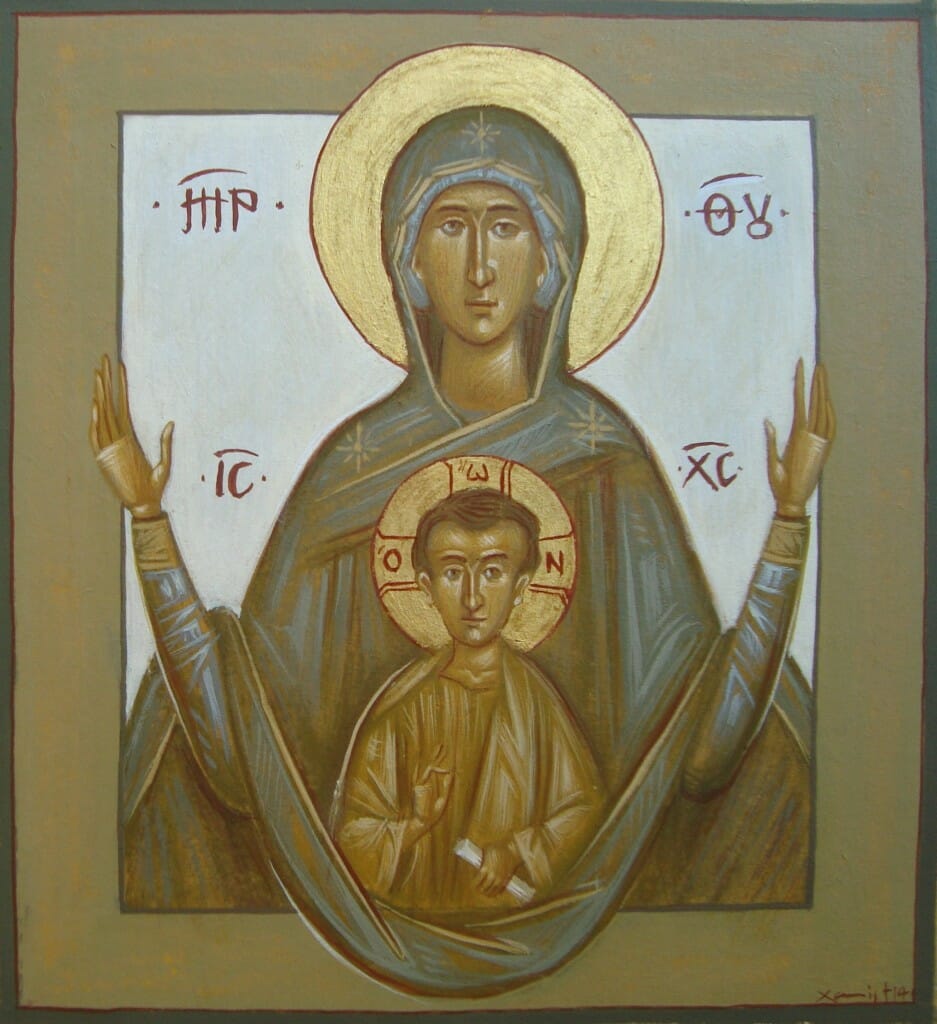
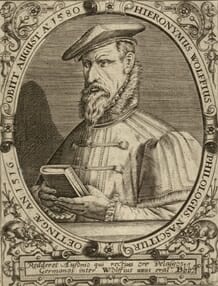
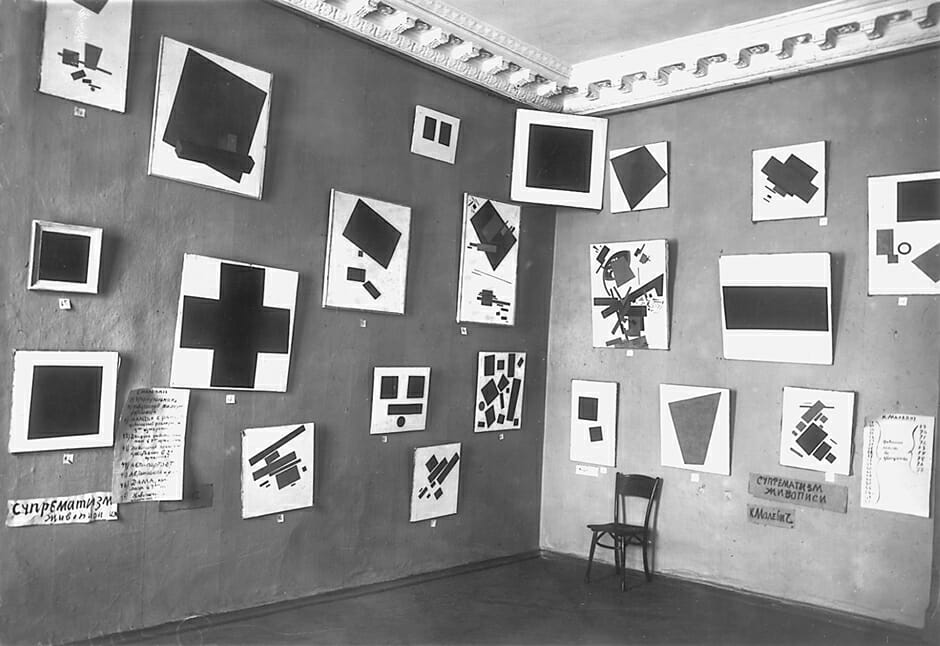
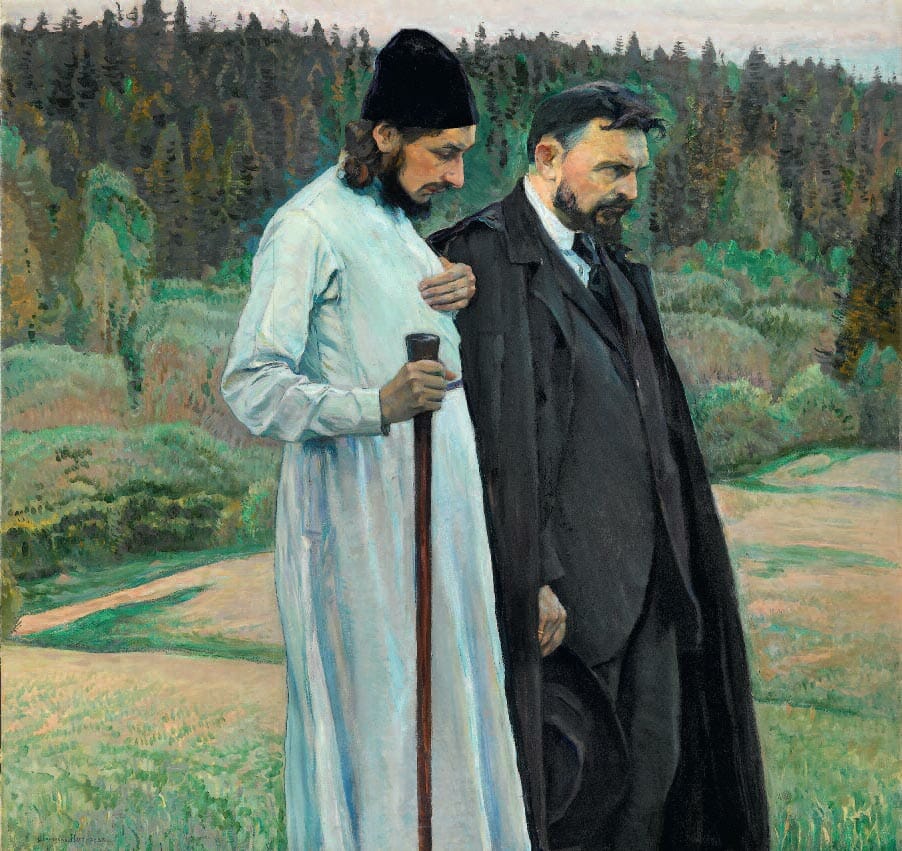
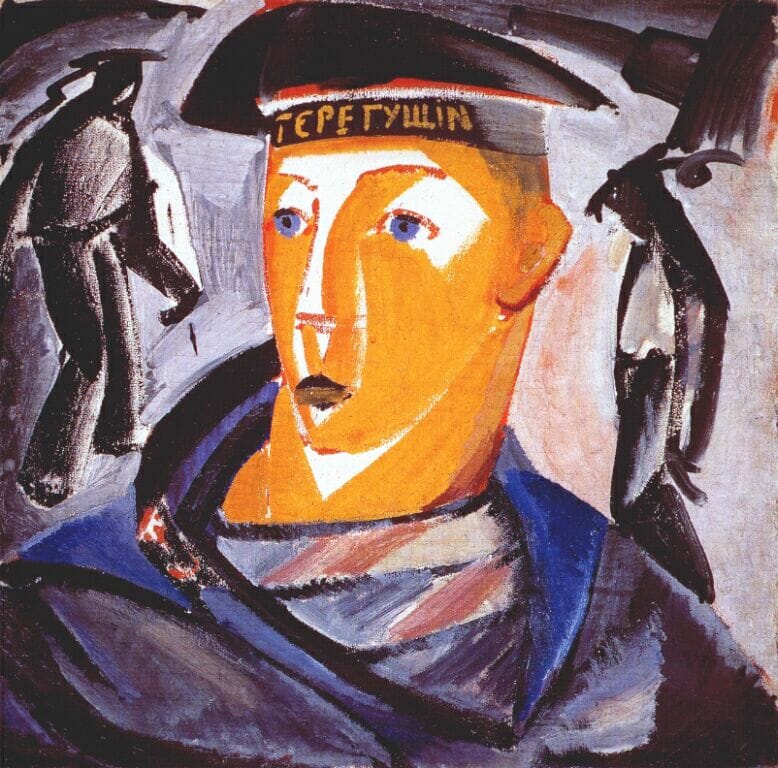
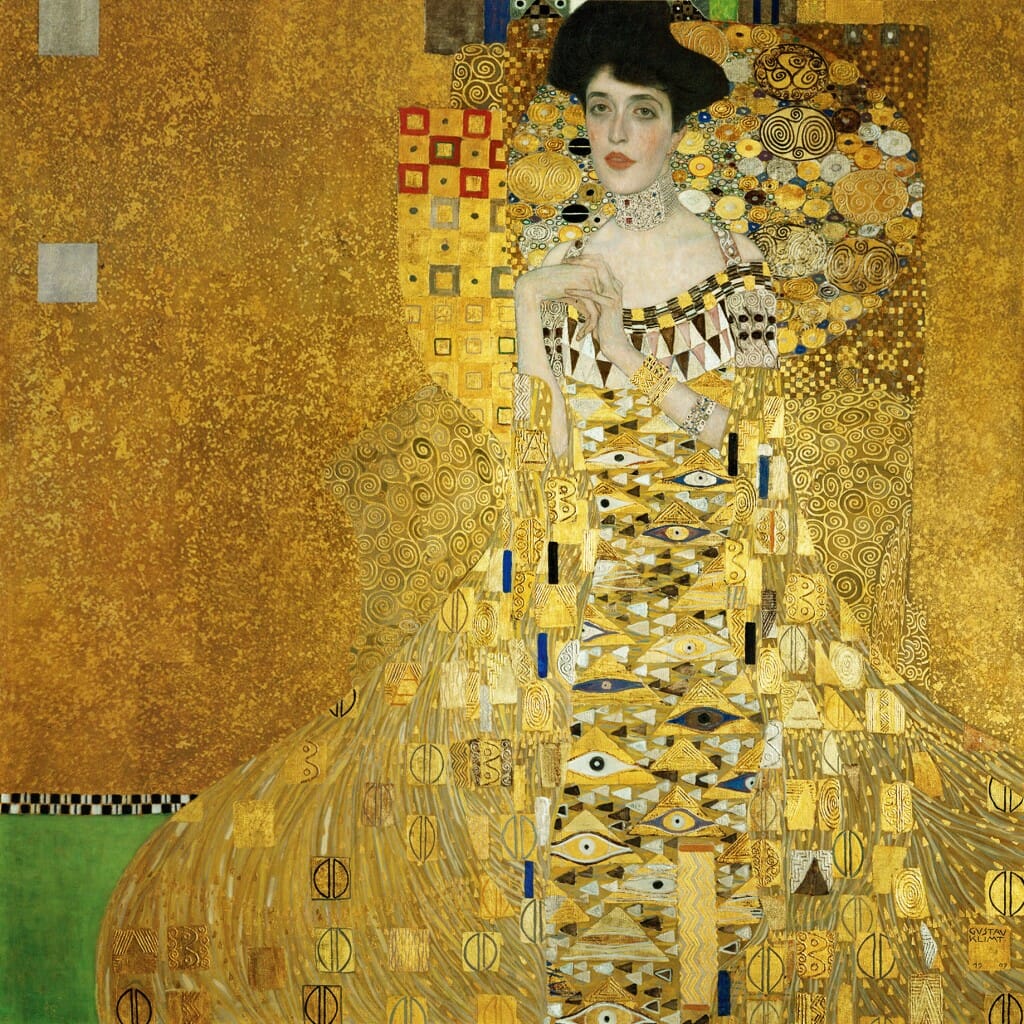
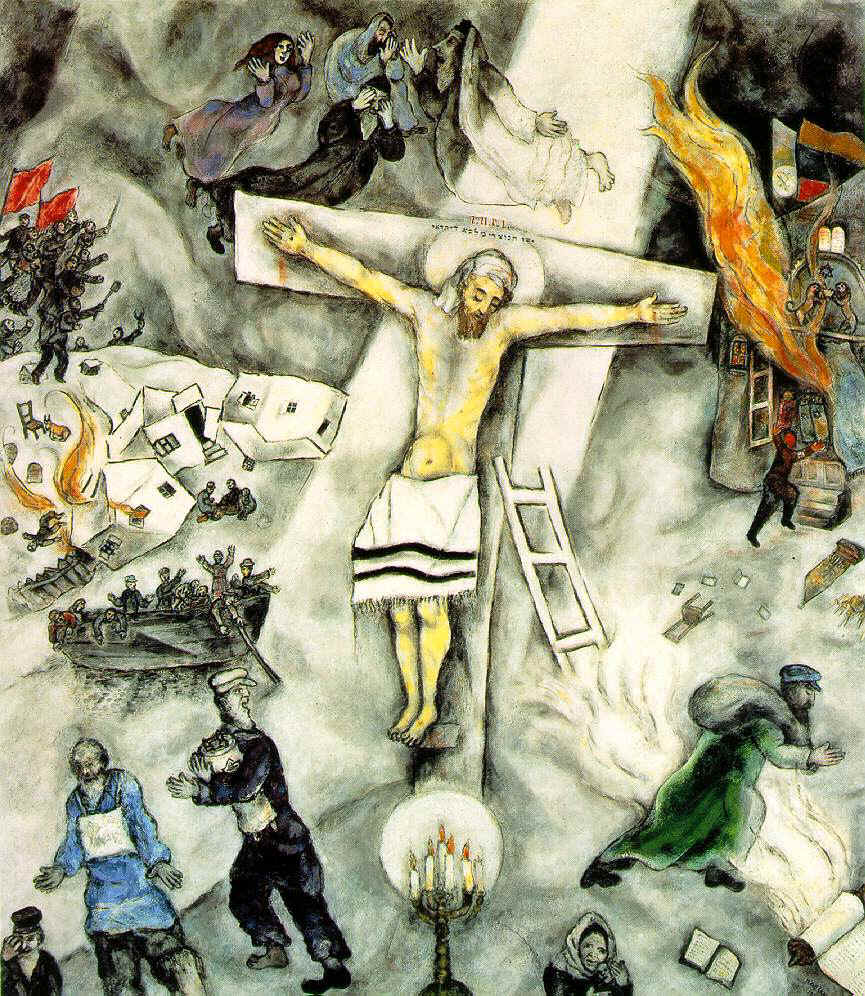
A very interesting read! While in art school we took a lot of art history. It was fascinating to see the shift at the 20th century. Western civilization was going going going down a rabbit hole towards artistic and ideological hell and then BAM!
Everything changed.
I’m still not entirely sure if the change was for the better: nihilism’s a tough pill to swallow, but it’s hard to deny the West’s fascination with the icon. My Western Catholic classmates constantly asked me about my work and what it meant. When I gave my senior year presentation on my iconography I filled the whole room.
Something is very different in the West now. I welcome it.
[…] The traditional and the modern in icon painting. […]
Very enlightening article, Federico. Thank you for sharing these thoughts.
I am going to put my reaction in dumb terms, please forgive me. Is the main initiative of this article a grasping for a way of talking about icons that doesn’t need the word “byzantine?” In my opinion it’s only a helpful modifier when the audience you’re speaking to is largely unfamiliar with the Orthodox Church and her life. But inside the context of the Orthodox Church, when speaking and writing we don’t rely on the word “Byzantine” do we? We say Icons, Sacred Images, or Holy Icons. I think there are a number of alternative words we could use to replace “byzantine” when speaking to mixed audiences – “orthodox,” “sacred,” “liturgical,” and maybe some that others will think of.
But is the real nagging question behind your article how could it have happened that contemporary orthodox theology strayed to a point of imbalance (over-dogmatization) in its treatment of the icon during the 20th century? It seems to me that if we take it as normal that even the greats among us need to be corrected, that it is not such a big deal for scientists and western historical research to point out flaws in the theology inside our church that needs course correction. That happens and it is not a threat to us.
You mention a search for a unified methodology to the icon, but forgive me – I hope that never happens, because the tradition of the image is a living mystery that can never be formulated into a set system. There will always be new ways of seeing the work, thought, and product of iconography because words can never fully convey what the image conveys, and the image can never fully convey the reality of the person(s) depicted. And contrary thoughts from outside and inside the Church will help us keep ourselves fresh.
Thank you Baker for your feedback… Me too hope that never we close the meaning of icon tradition into definitions, but I also think that it’s very important to define which is the mode of thinking, the method. All the best in IC XC!